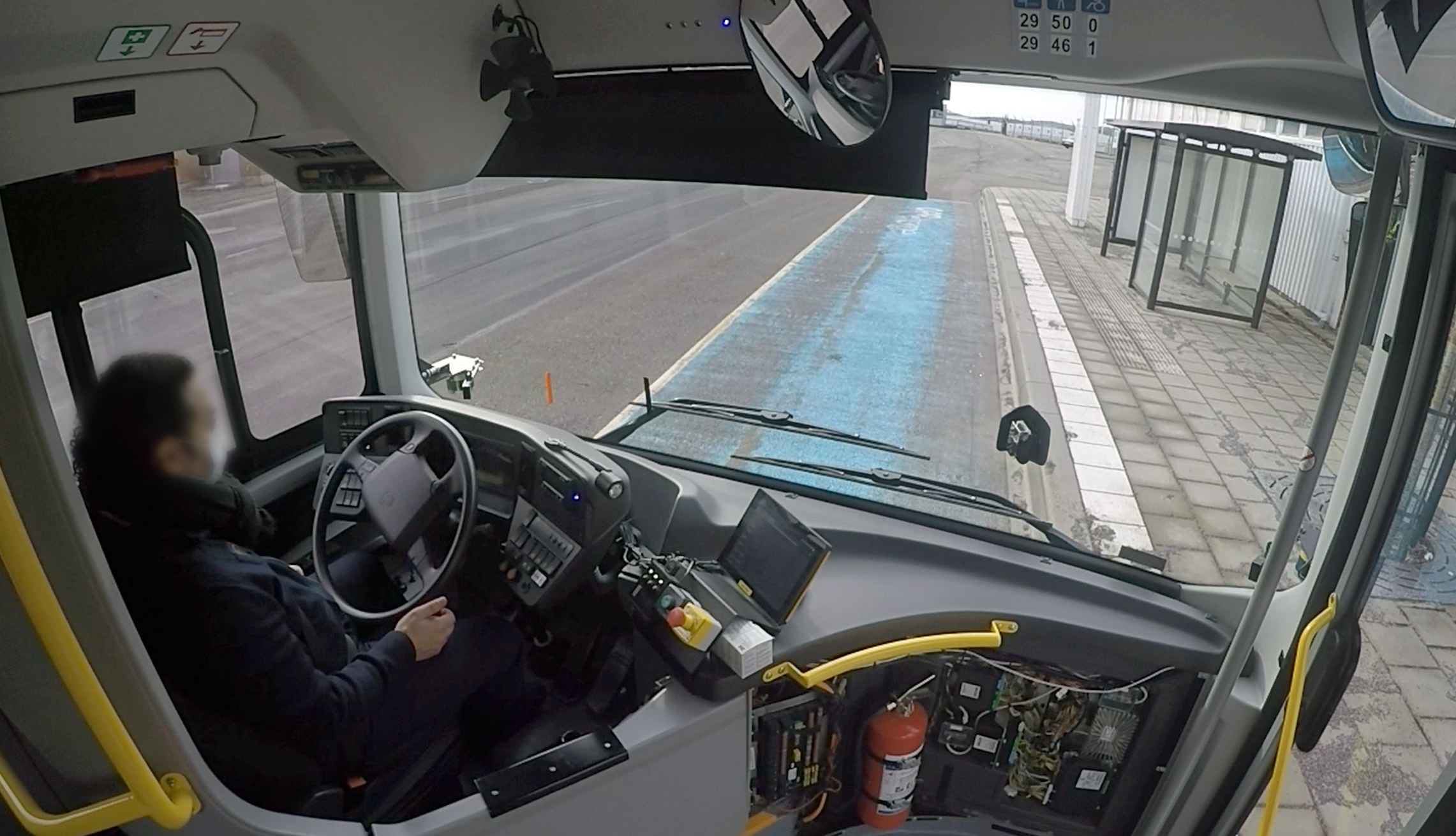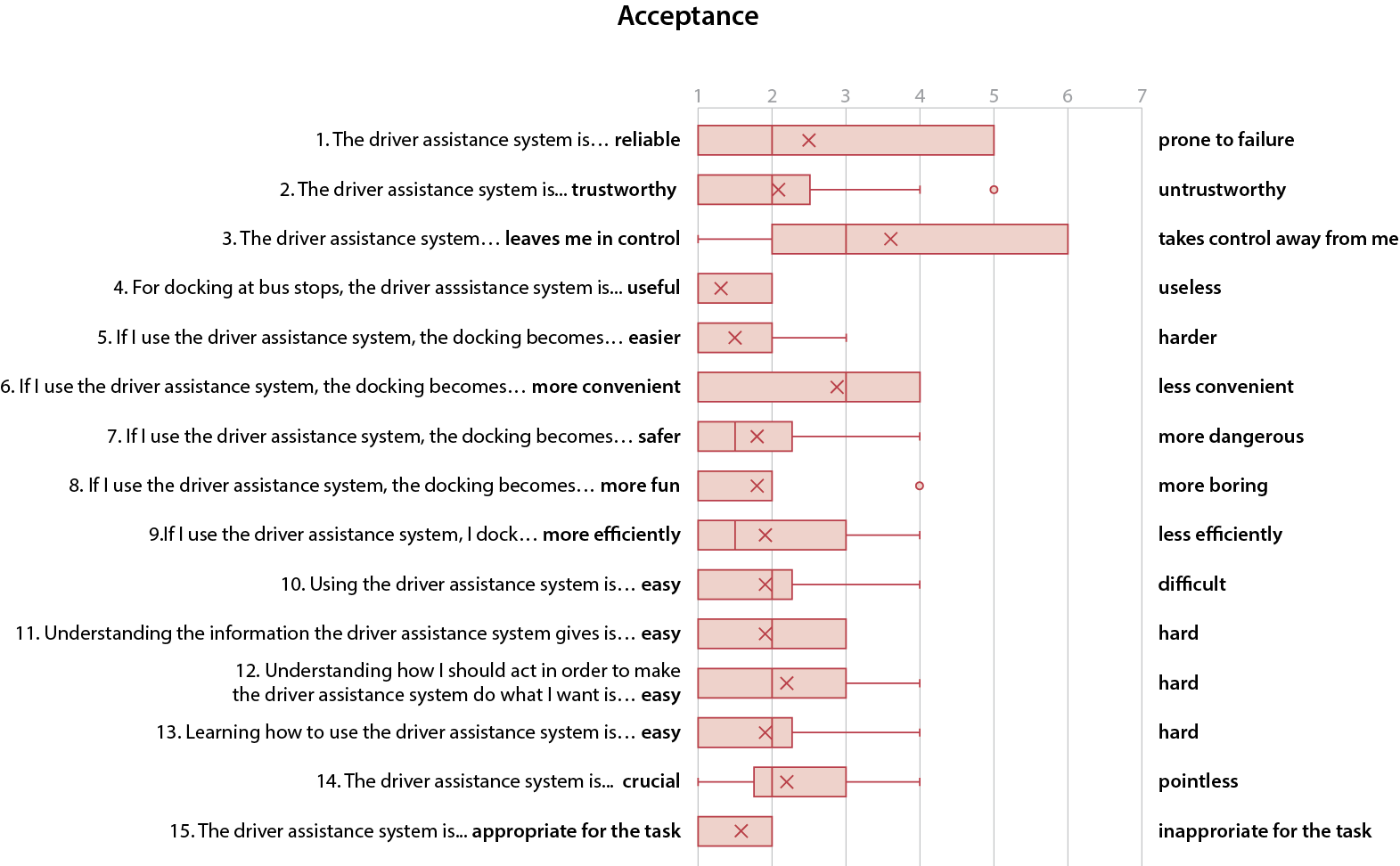
Explorative study in which 10 professional bus drivers got to use an advanced driver-assistance system, that could automatically dock at bus-stops, on a public route with five different bus-stops.
Due to the argued benefits of passenger comfort, cost savings and road safety, the bus sector is showing increasing interest in advanced driver-assistance systems. Despite this growth of interest and the fact that work tasks are sometimes complicated, there has been little research into advanced driver-assistance systems in buses. Therefore, the aim of this study was to develop further knowledge of how professional bus drivers experience and accept an advanced driver-assistance systems which can help them dock at bus-stops.
I planned and took part in conducting and analyzing the study.

An explorative study was conducted in which 10 professional bus drivers got to use an advanced driver-assistance systems that could automatically dock at bus-stops. The study was conducted on a on public roads with regular traffic with five different bus-stops located in an industrial area of Gothenburg, to achieve as natural a setting as possible. During the test-drive, each participant drove the test route a total of five times using the automated system.

The study was conducted using a mixed-methods approach, with a combination of quantitative and qualitative data collection methods. Interviews were conducted before, during and after the test drive. All were semi-structured in nature, with a combination of open and closed questions. The interview focused on participants: (i) general experience, (ii) trust in the system, (iii) understanding of the system, and (iv) anticipated effects of using such a system in their everyday work. The interview data was complimented with Questionnaire data on the drivers’ acceptance of the using a modified SKAS-scale.
The study identified that advanced driver-assistance systems that can automatically dock a bus at bus-stops seems to be promising from different perspectives, as it was perceived positively by the participants and considered to have multiple benefits for bus drivers, passengers, and the transport organisation. However, for successful implementation and acceptance by drivers in a public transport system context, it is crucial to consider the trade-off between efficiency and other benefits of the advanced driver-assistance systems taking into consideration the objectives of the work and work organisation.

The study also revealed that when investigating user trust and acceptance of ADAS in a work context, it is important to consider these aspects at different levels; the operation, use and work system levels, as well as how these levels affect each other, so as to grasp the nuances regarding factors that influence users’ trust and acceptance of automated systems.
Apart from contributing to research by providing empirical data on users’ acceptance of advanced driver-assistance systems and proposing a three-level perspective that enables more precise analysis of user experience and acceptance, the study also proposed design recommendations to improve the human-machine interaction.

Johansson, M., Ekman, F., Karlsson, M., Strömberg, H., & Jonsson, J. (2022). ADAS at Work: assessing professional bus drivers' experience and acceptance of a narrow navigation system. Cognition, Technology and Work, 24, 625-639. https://doi.org/10.1007/s10111-022-00704-4